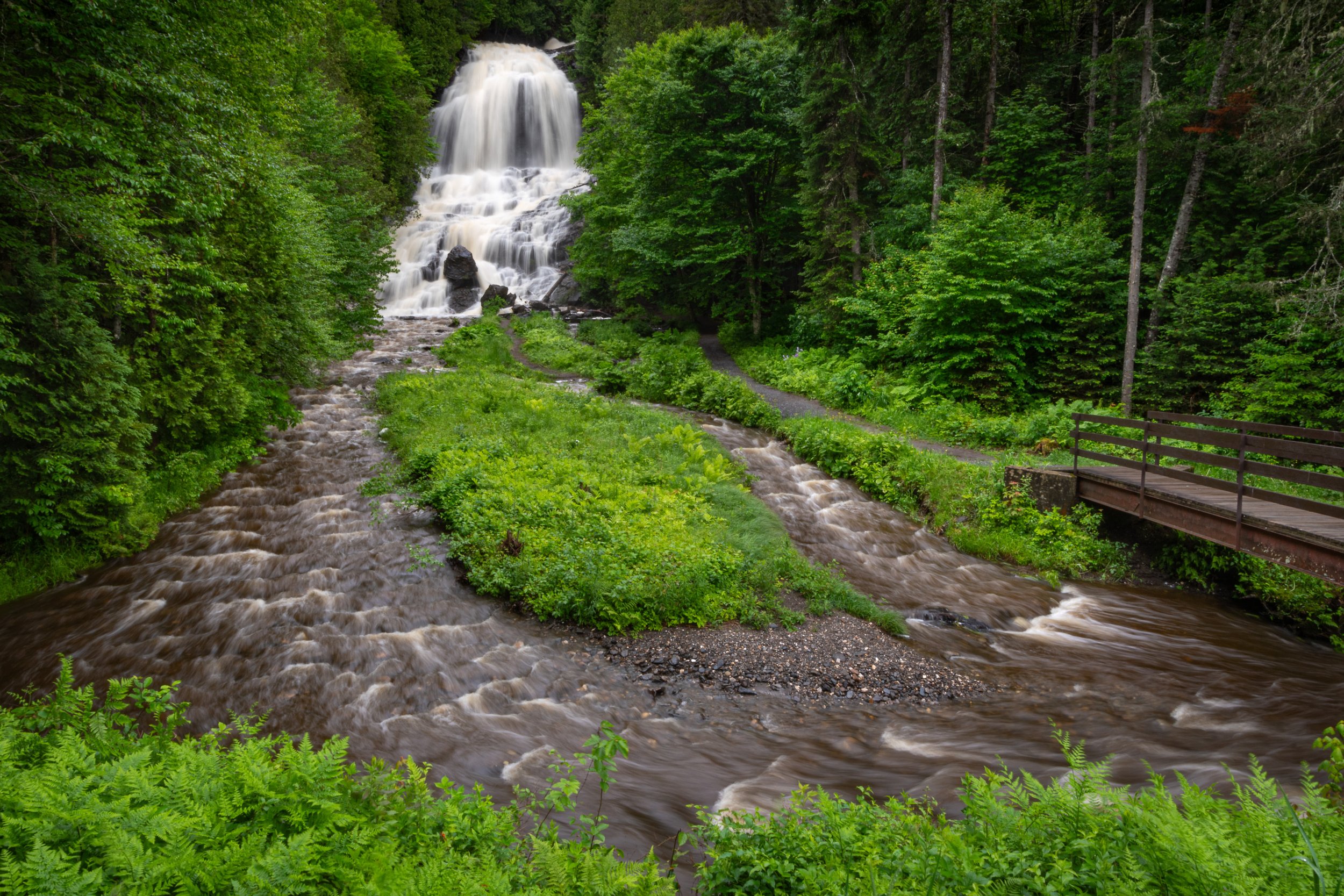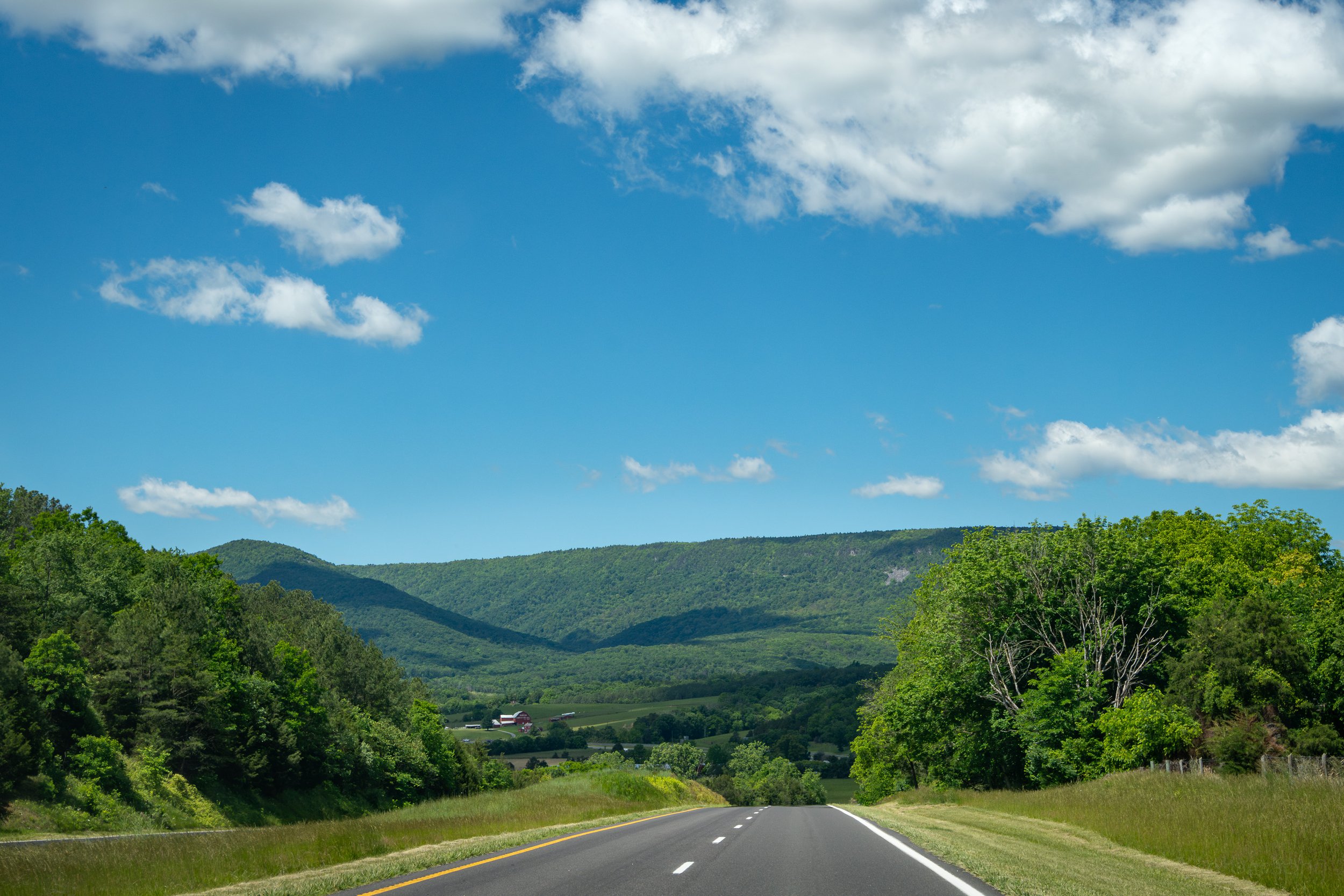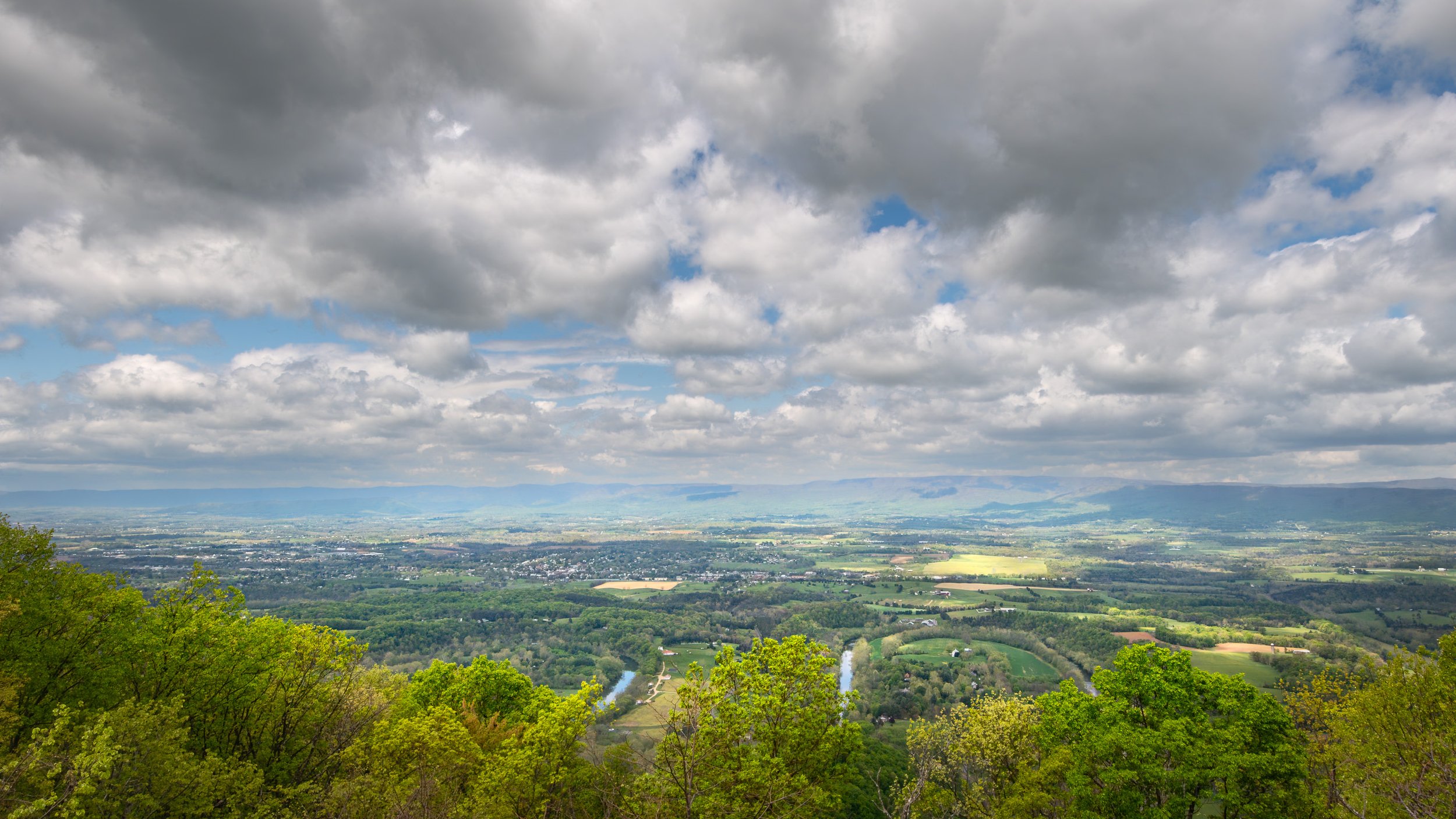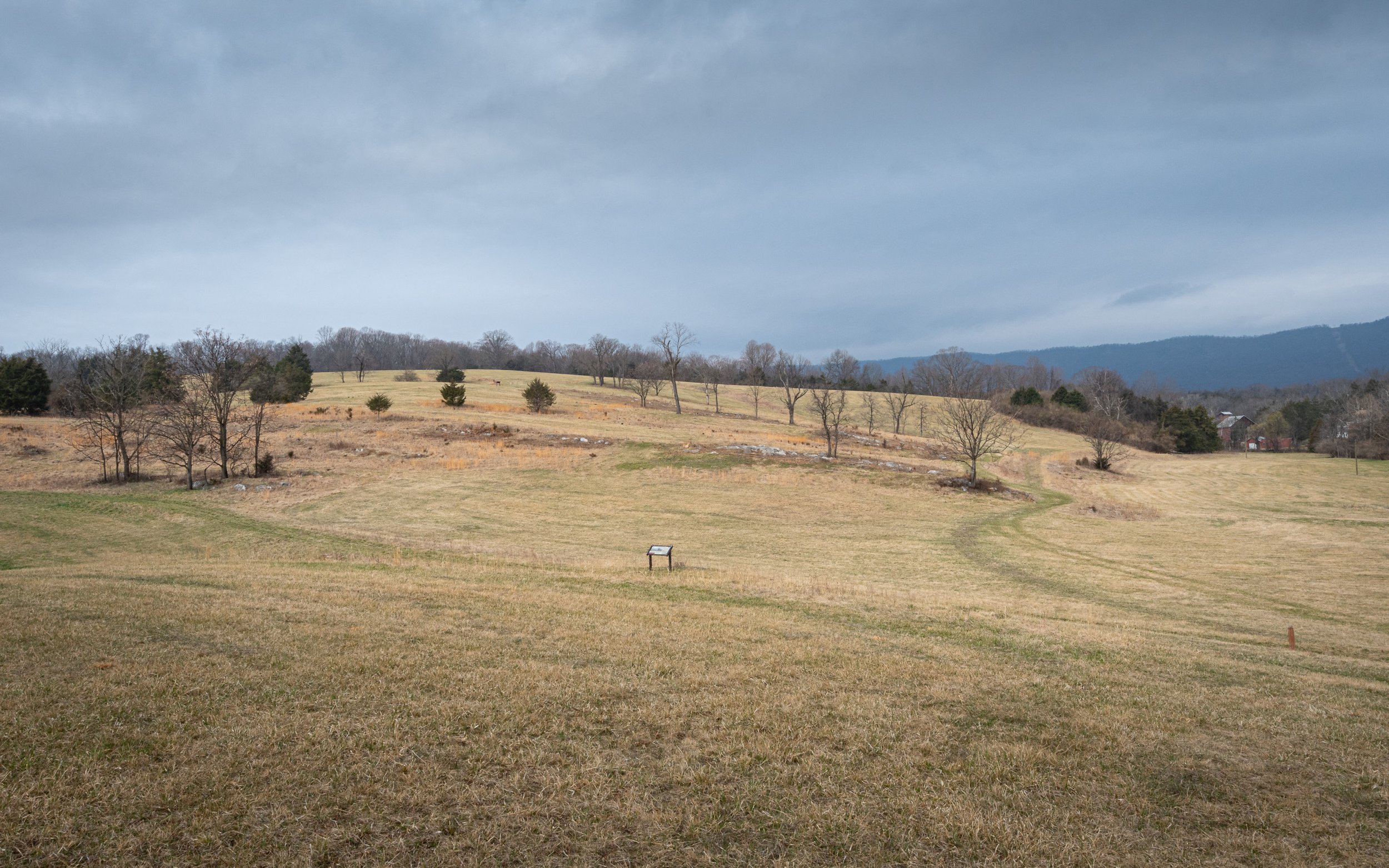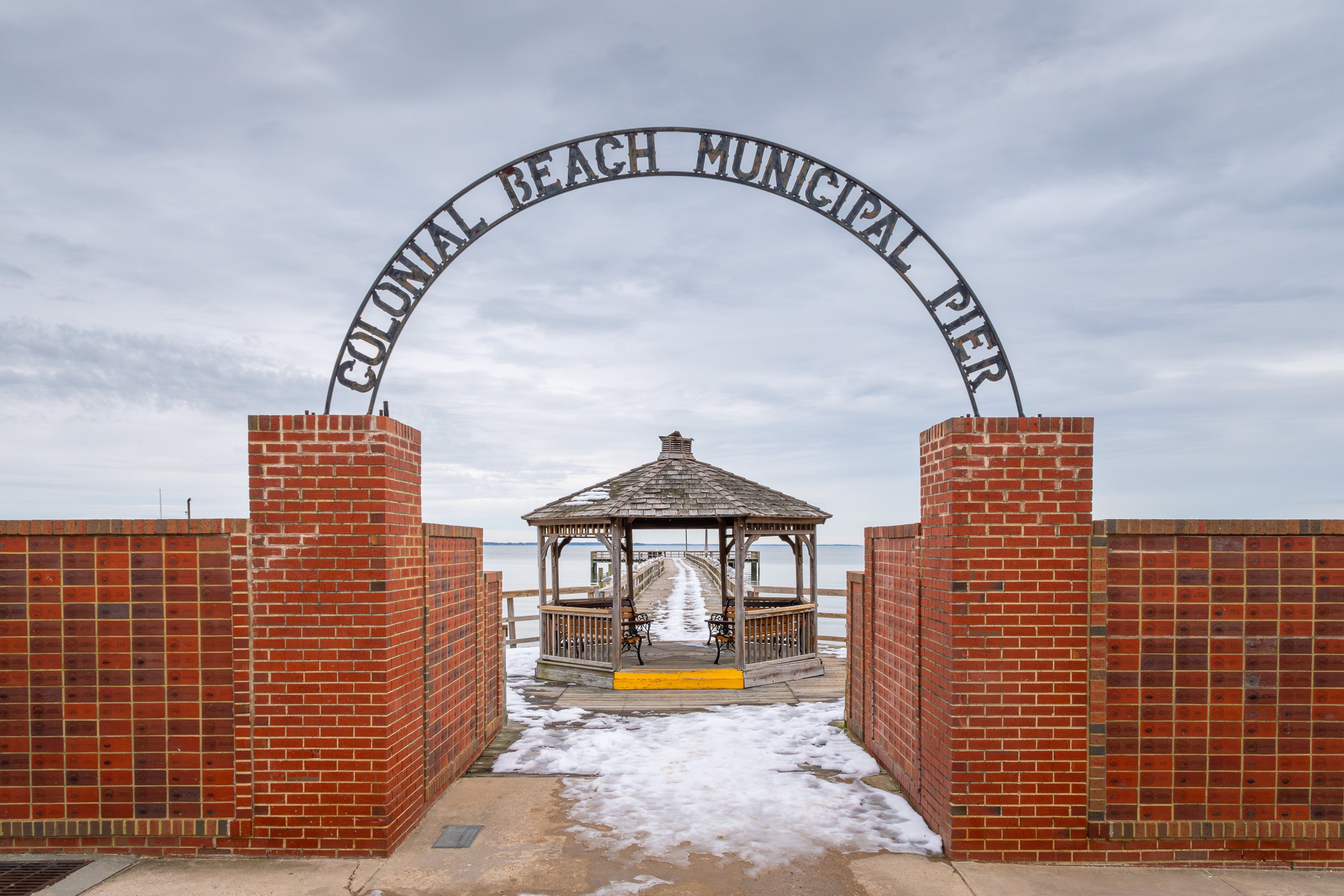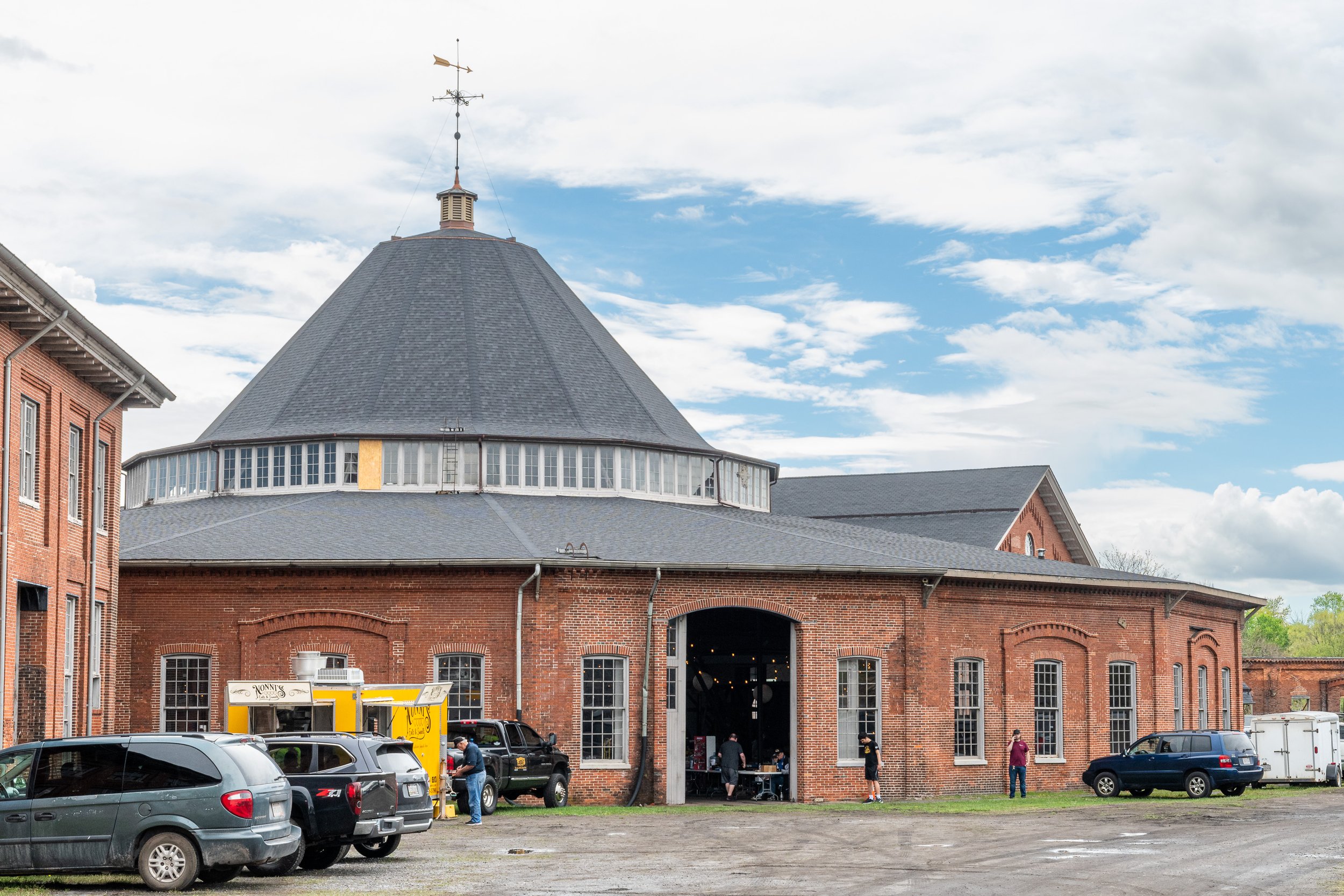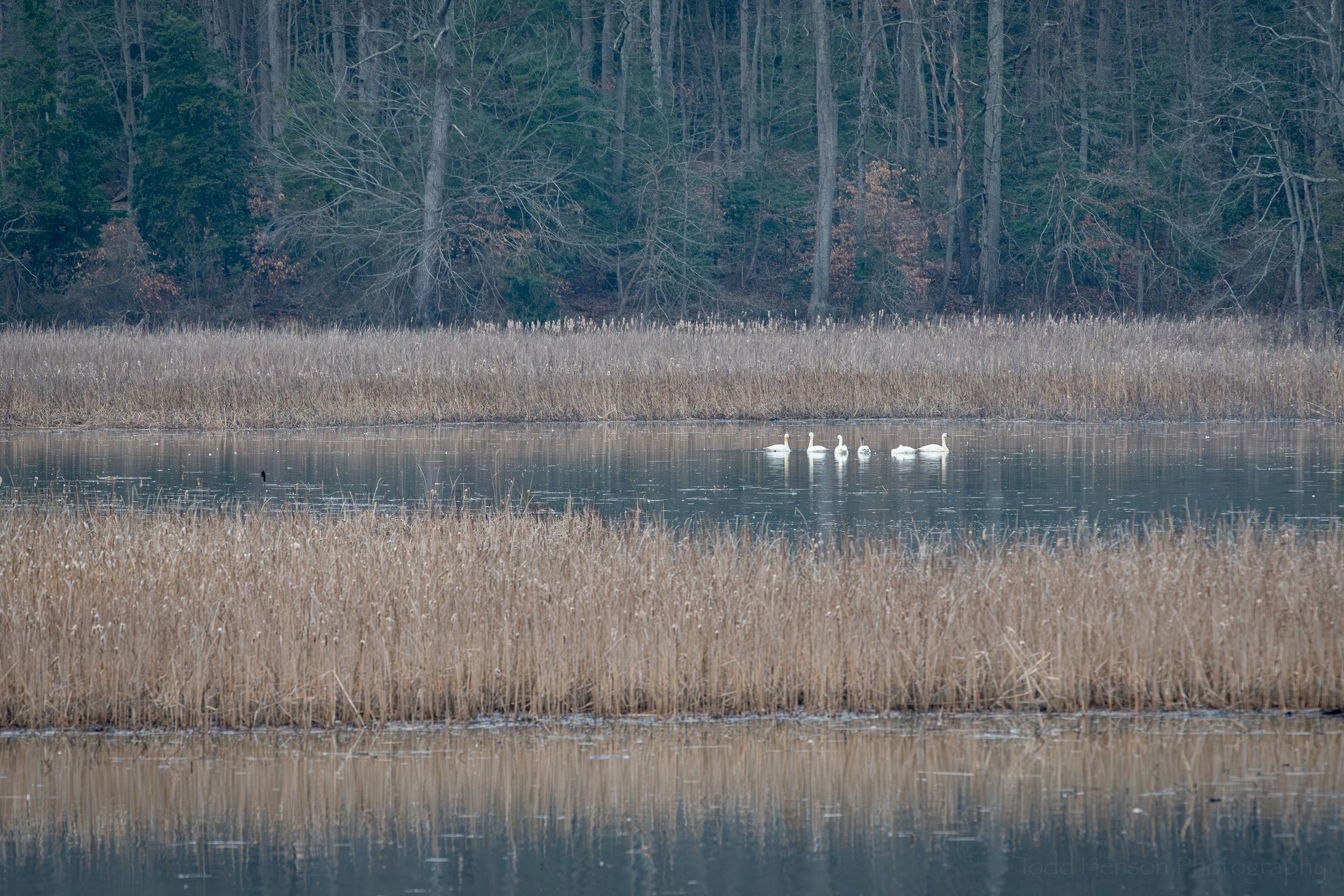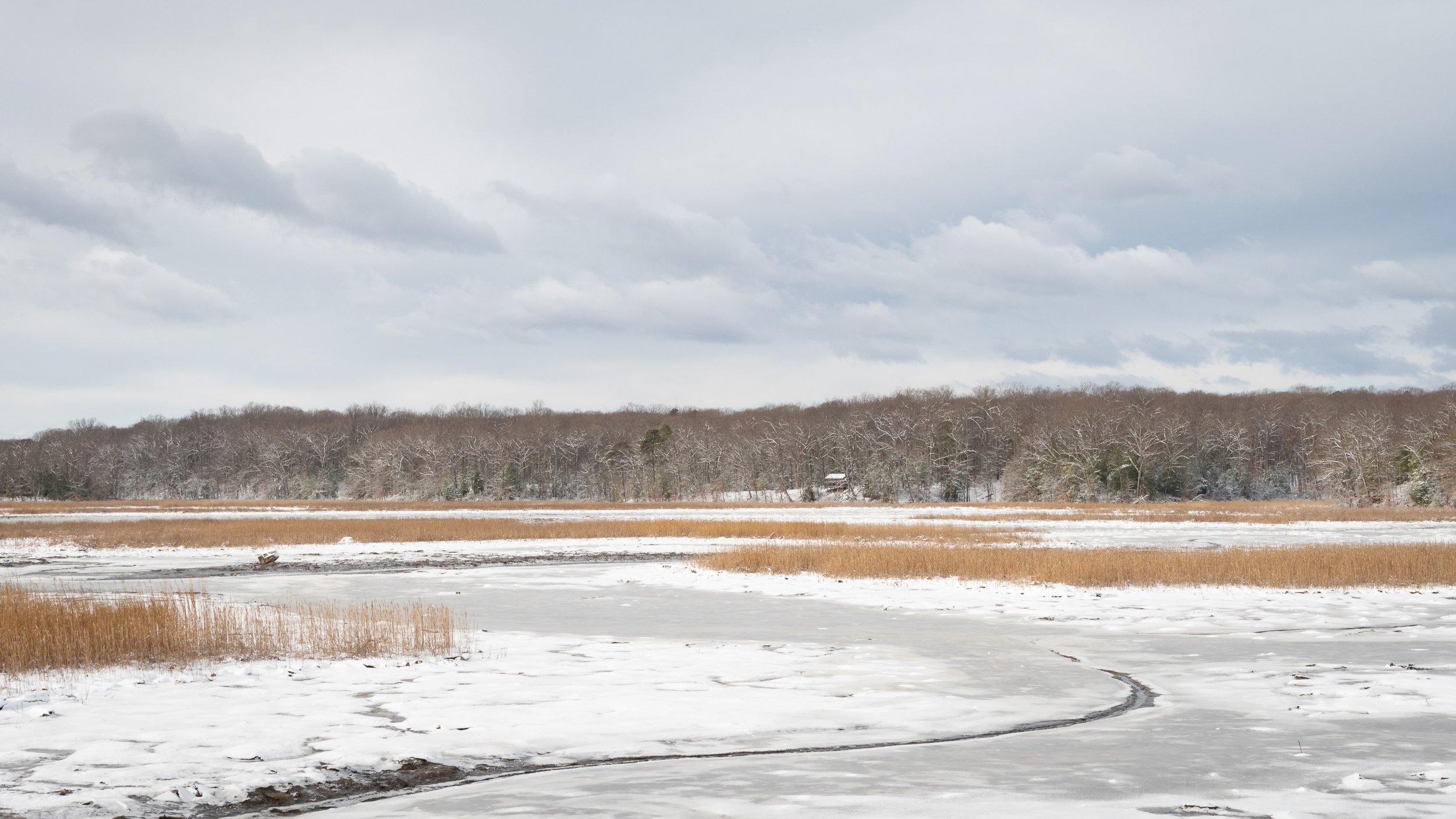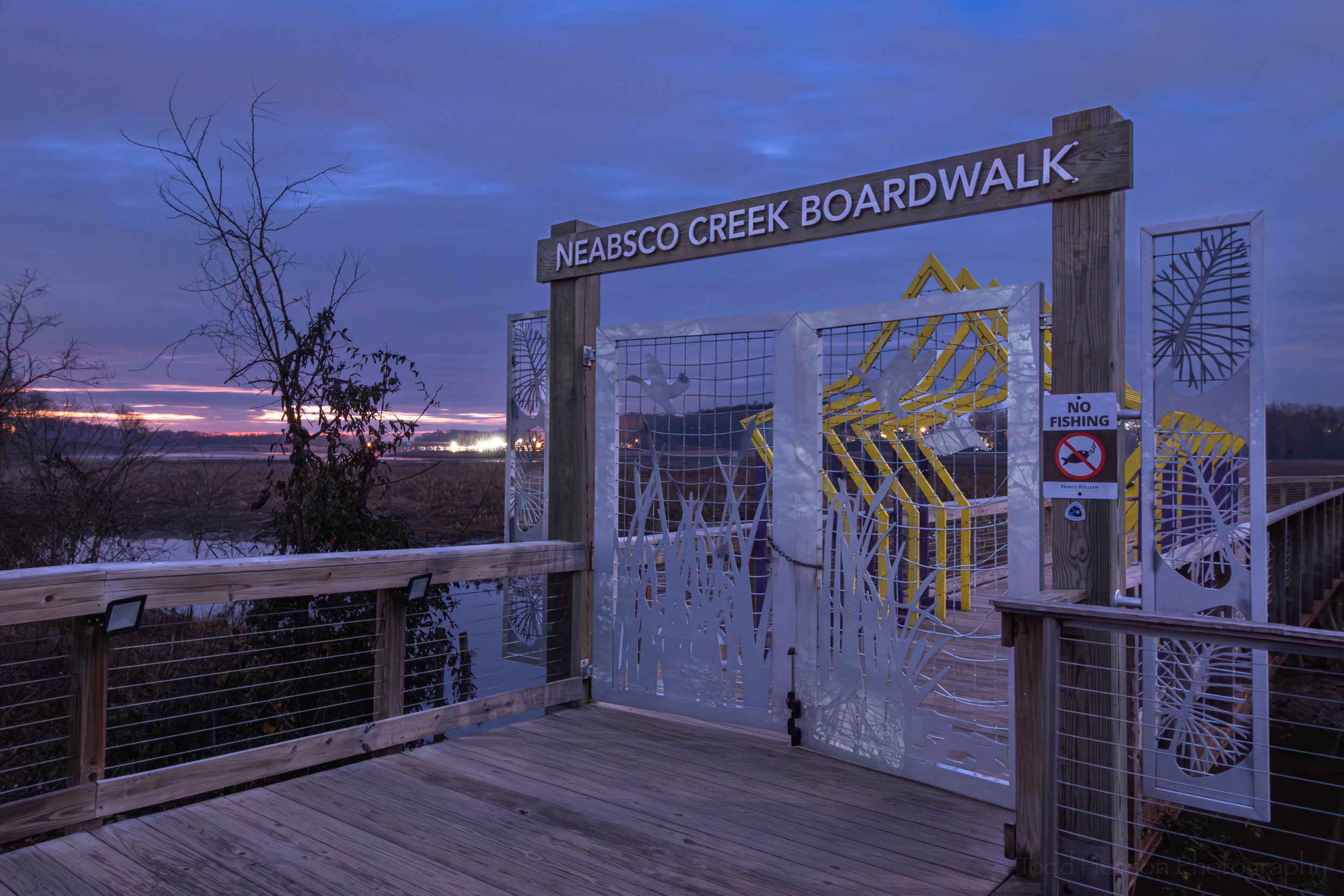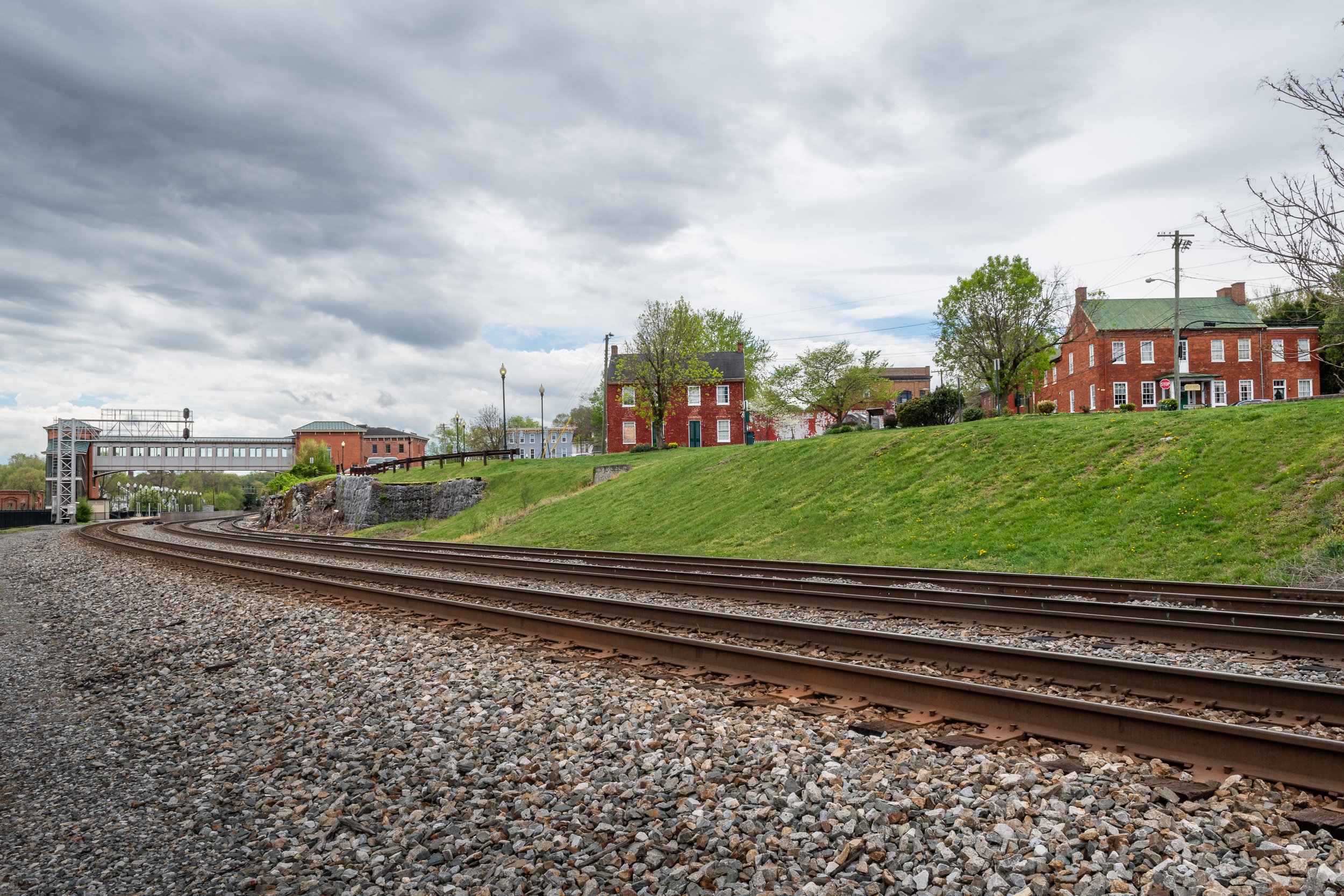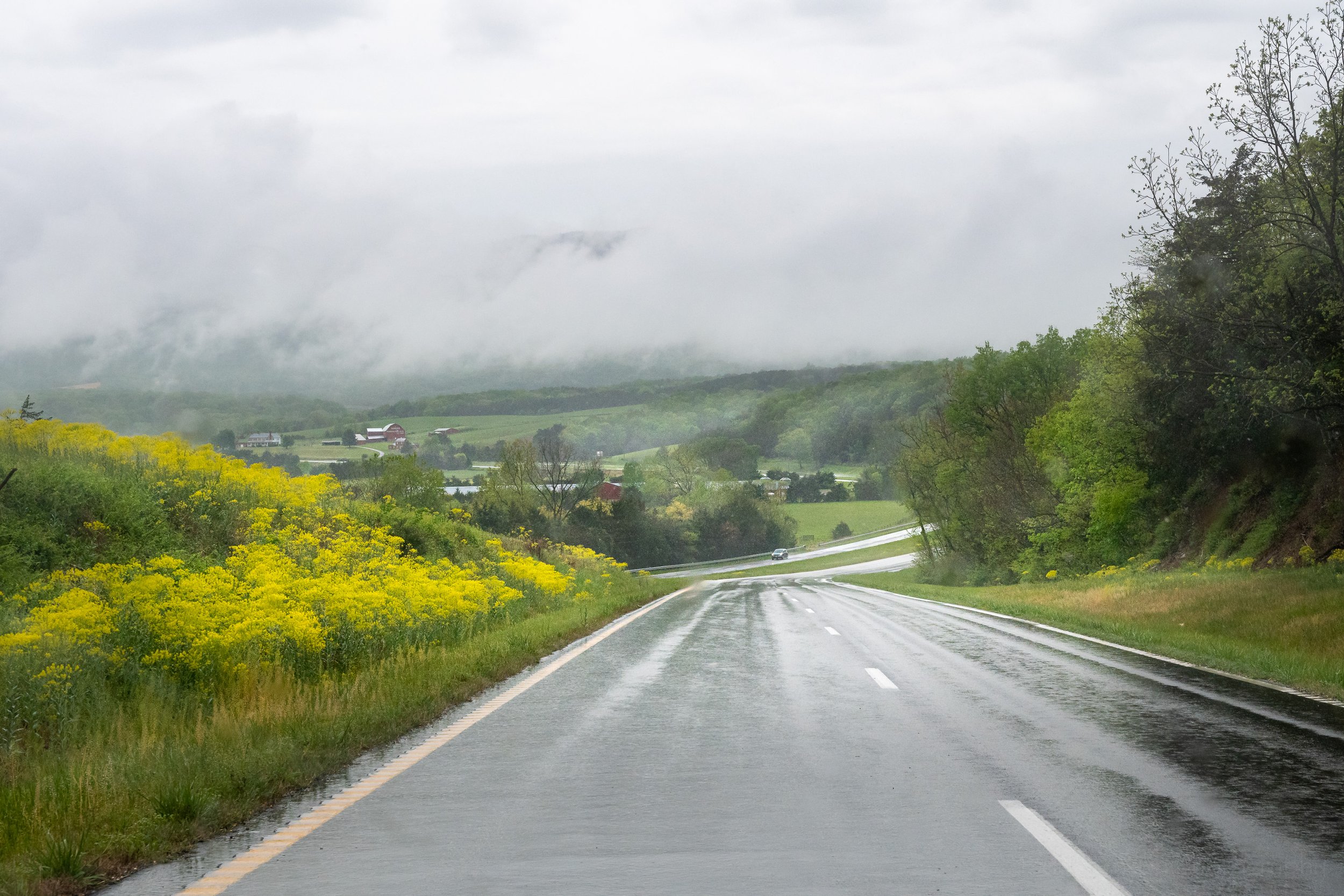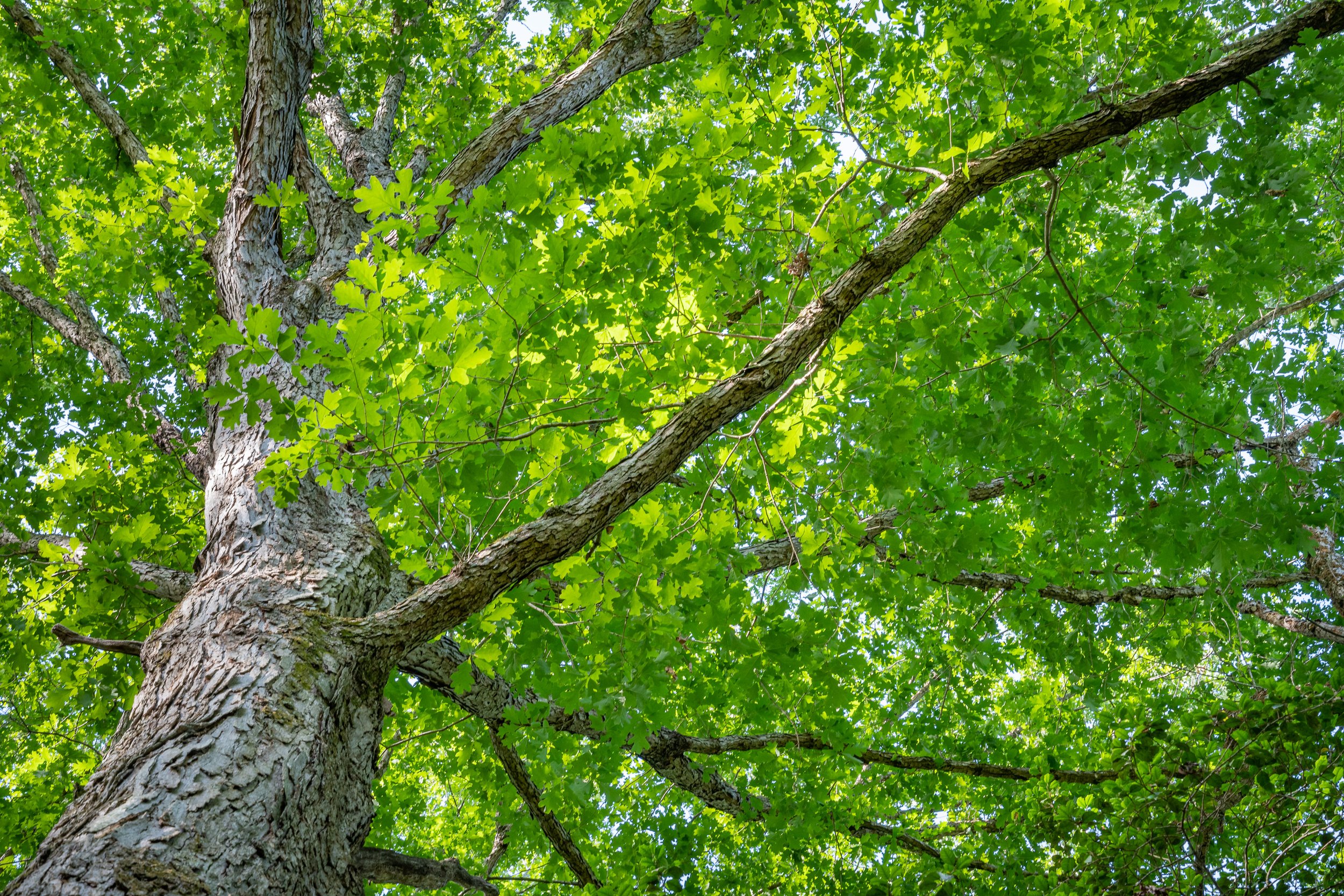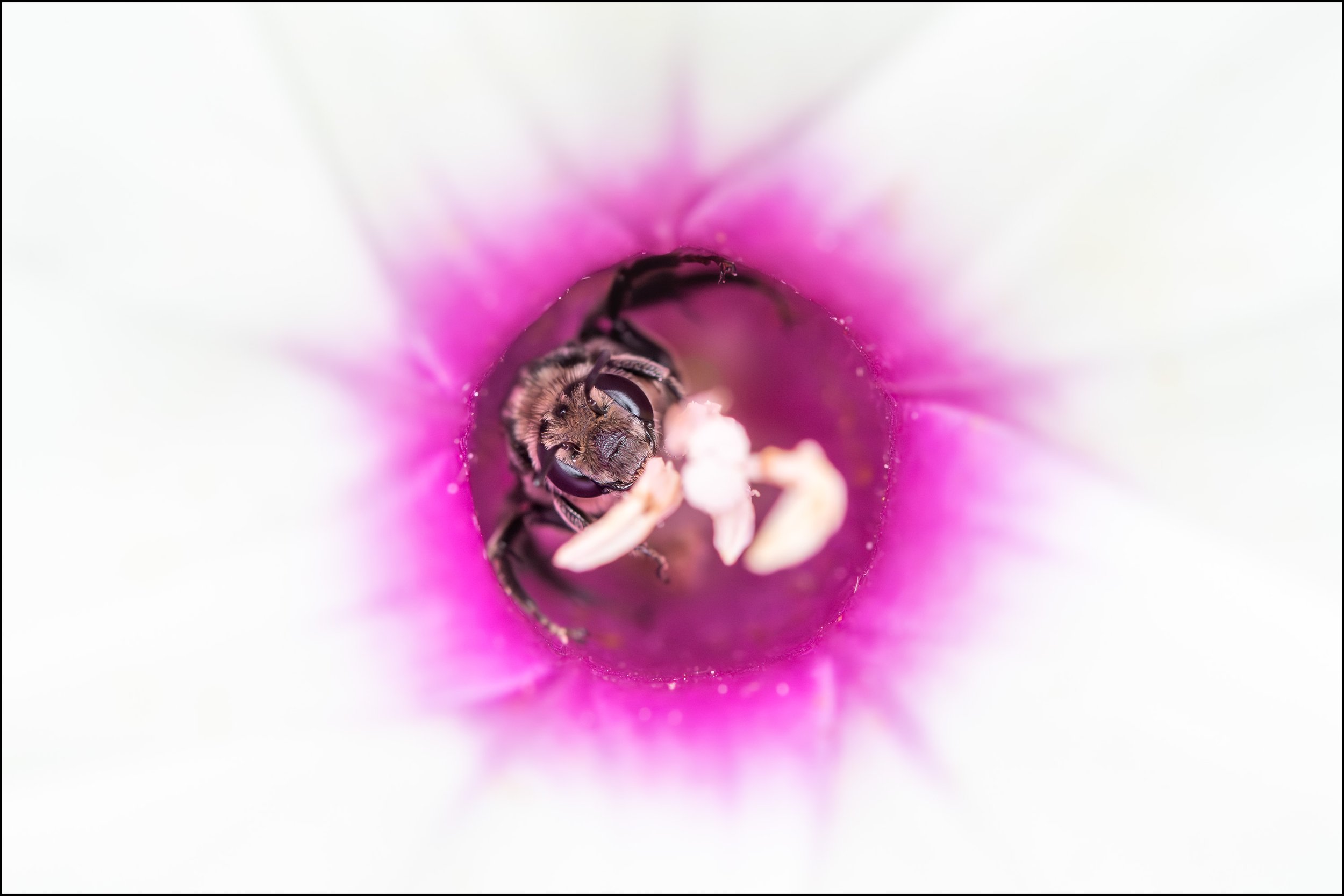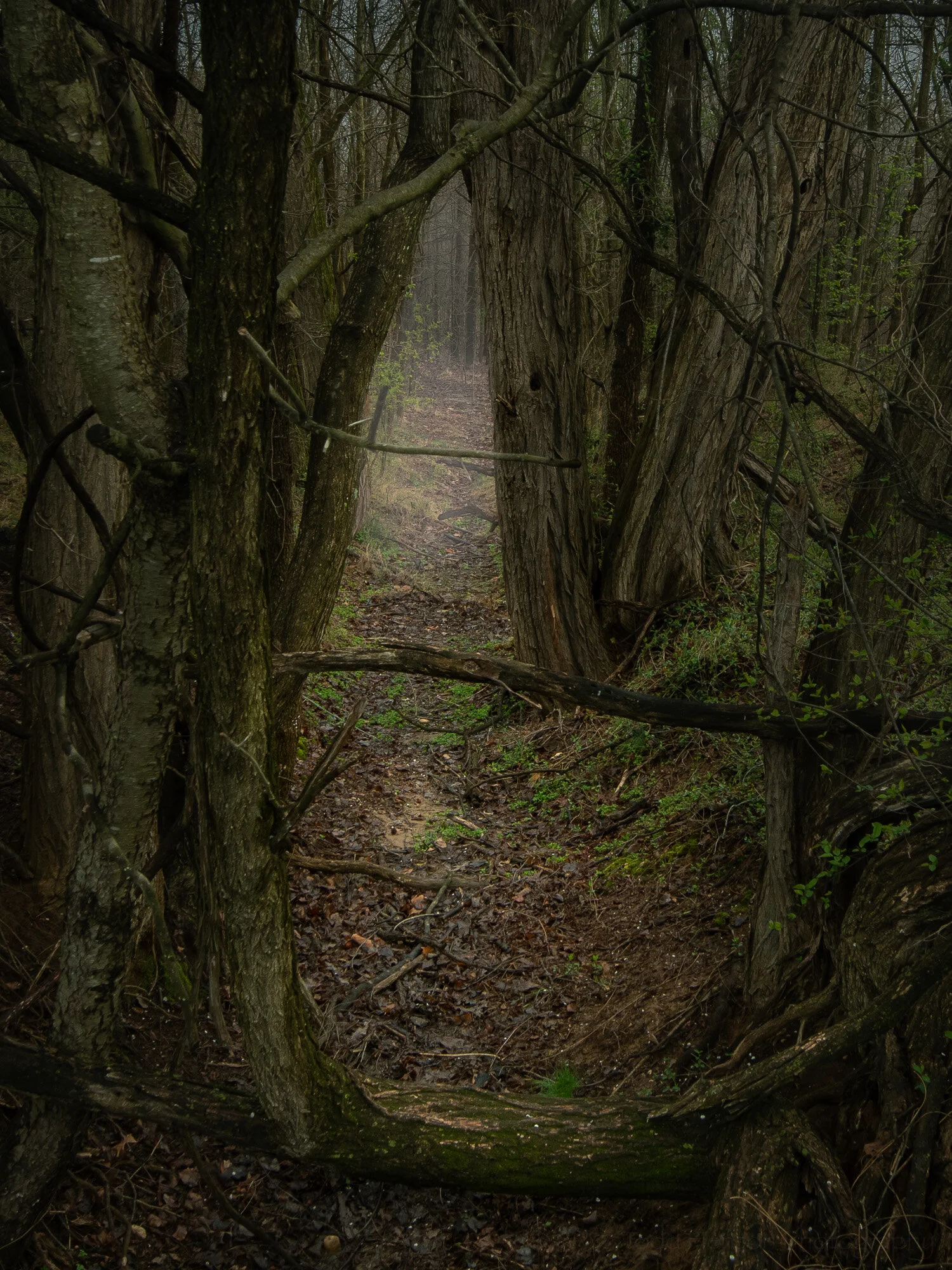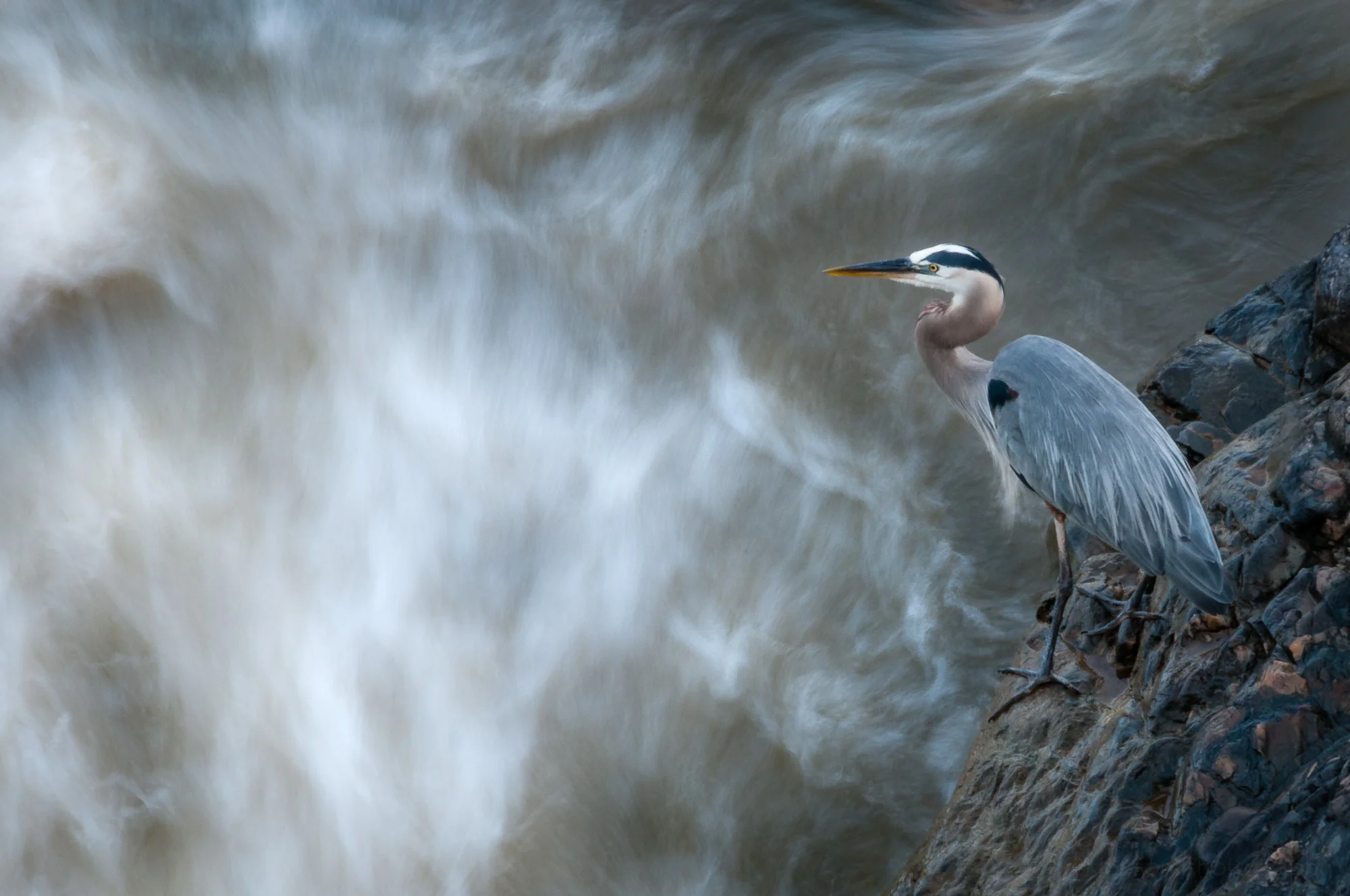In late April of 2025 my father and I found ourselves driving through the scenic Fort Valley of Virginia. I chose to take us out of the valley along Woodstock Tower road which weaves through one of the gaps in the mountains on the western part of the valley, then up and over another mountain before arriving at the lovely town of Woodstock, Virginia. At the highest elevation of the road is a trail that leads up to Woodstock Tower, a metal tower that rises to 2000 feet in elevation, tall enough to provide some magnificent views of both Fort Valley to the east and Shenandoah Valley to the west.
Fort Valley Road is paved, but Woodstock Tower Road quickly changes to gravel once it starts up the mountain and some sections are somewhat narrow, which left me hoping the entire time we wouldn’t meet anyone coming the other way.
Click on any of the images below for a larger view.
Woodstock Tower Road from Fort Valley
Arriving at the highest elevation of Woodstock Tower Road are some very small areas where you can pull off the road and park. The trail up to the tower is well marked with a large sign. Some sections are fairly level and easy, while others do have some elevation change with scattered rocks and/or rocky steps.
Woodstock Tower Trail
Before long we get our first view of the metal Woodstock Tower through the trees. Stepping closer gives a better view.
Hiking to Woodstock Tower
First view of Woodstock Tower
Approaching Woodstock Tower
Woodstock Tower
I found myself stopping partway up the steps, marveling at the landscape appearing above the tree line. I had to keep myself from taking too much time there and instead head up to the very top where the views were amazing. Initially it felt very peaceful, very awe-inspiring, seeing all that distance when in Virginia I’m used to feeling a bit more closed in with rolling hills and lots of trees. But from the tower you can see so much further.
Climbing Woodstock Tower
Facing east we can see the somewhat narrow Fort Valley, where we came from, and the mountains beyond. It was early spring so there were many shades of green as the leaves were just beginning to fill out on the trees of the mountains.
Fort Valley from Woodstock Tower (4-image stitched pano)
To the west is the much wider Shenandoah Valley. Down below we can see the winding Seven Bends portion of the North Fork of the Shenandoah River, given that name because of all the back and forth bends as it travels through the valley. Part of it is within Seven Bends State Park. Further on is the town of Woodstock.
Woodstock and Shenandoah Valley from Woodstock Tower (3-image HDR)
I could have stood there for hours staring out at the landscapes below, though to be honest when the wind picked up I changed my mind and headed back down. 😊
Climbing down from Woodstock Tower
A wider view of climbing down from Woodstock Tower
One final look up at Woodstock Tower
I took one last look back up at the tower, then followed the trail back to the gravel road. Driving down the western side towards Woodstock there were far more switchbacks, some with a little visibility but others blind and far narrower than I liked. Thankfully, the only times we encountered other vehicles were in wider sections of the road where it was easy to pass one another. Not all sections of the road were so wide. Some might require one car to stop to allow the other to pass, and worst case one might need to back up to a wider section, not something I’d care to do on a narrow and winding gravel mountain road.
Woodstock Tower Road towards Woodstock
One of many switchbacks on Woodstock Tower Road
Winding down Woodstock Tower Road
In the end, though, it was a fantastic drive with some incredible views. I’m hopeful we’ll one day return to this area.
Do you enjoy these posts?
Sign up to receive periodic emails with updates and thoughts. Don’t worry, I won’t spam you. And please consider purchasing artwork or products from my online store, and using my affiliate links in the sidebar to the right when shopping online.
I appreciate your support!


